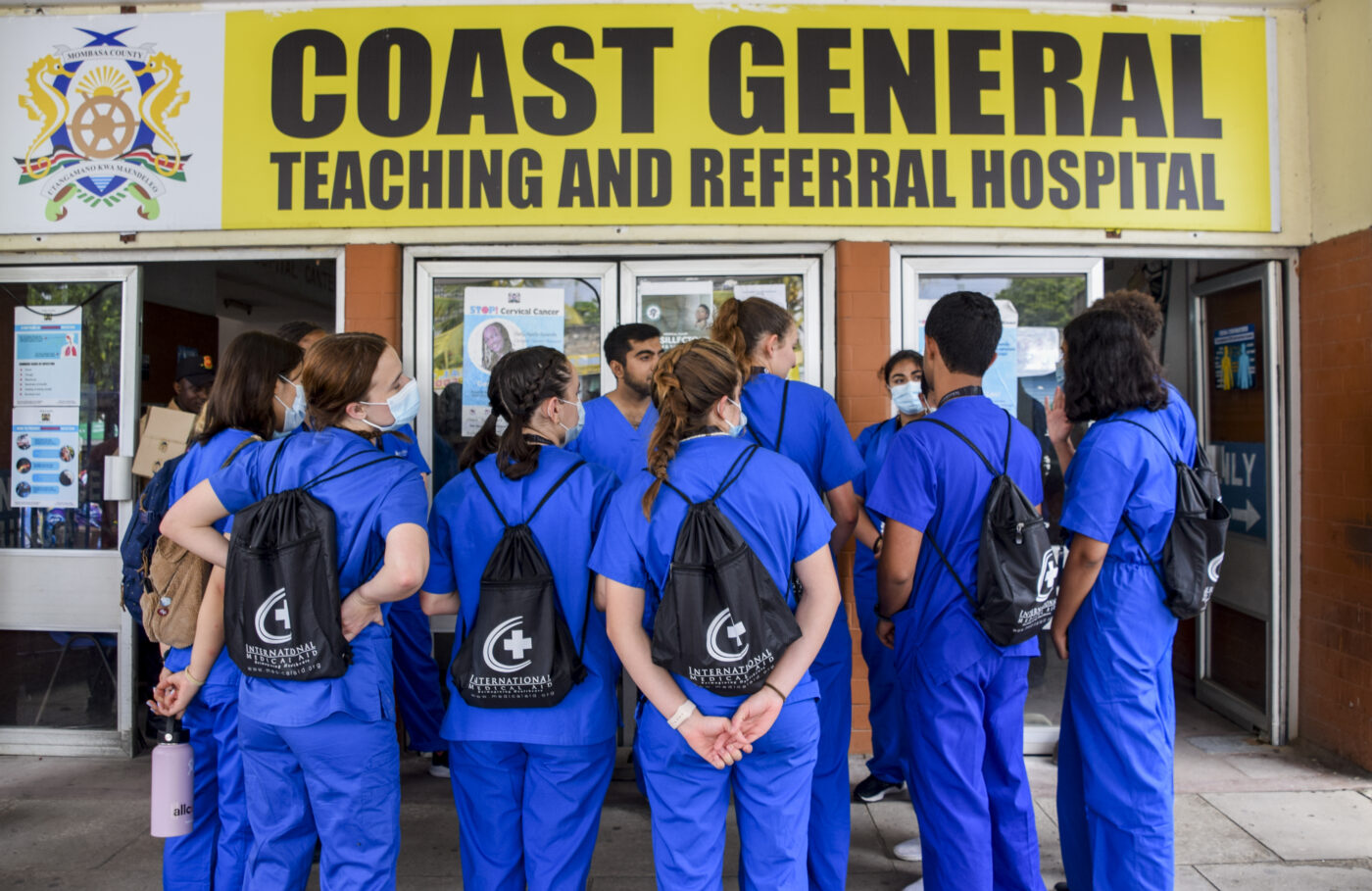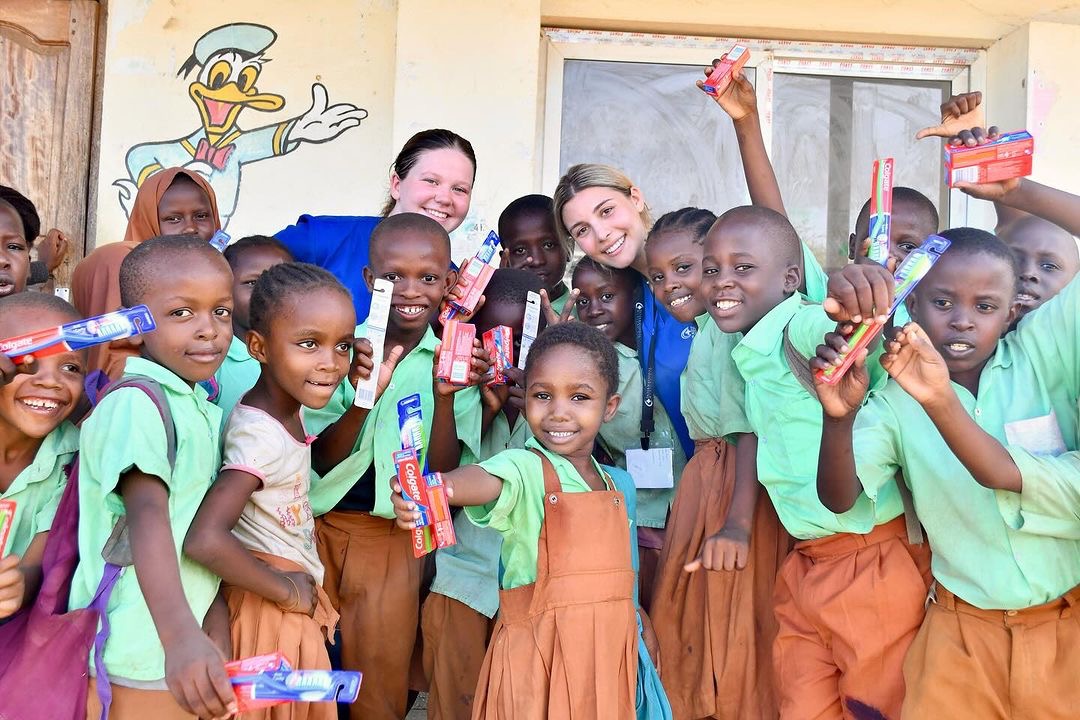As you may know, getting into medical school is a tedious process. All throughout undergrad you studied for hours in the library with other pre-meds while others had a more traditional college experience of parties and two-hour-long dinners. You probably spent your weekends shadowing doctors and your summers doing research so you could build your resume for medical school applications. You spent hours studying for the MCAT and hundreds or even thousands of dollars in prep courses, tutors, medical school admissions consulting, and exam fees.
All of that is just the beginning, as you will discover that medical school is multiple times more demanding. If you are reading this, you are probably near the end of your medical school journey and are applying for residency, the next chapter in your medical career. After passing the USMLE Step 1, Step 2, and Step 2CK, and having completed most of your third-year clinical rotations, you probably have an idea of the specialty you want to spend the next three to seven years training in. Although medical students are a highly motivated, intelligent, and hardworking group, the reality is that not everyone can match into a competitive specialty such as orthopedic surgery, ophthalmology, dermatology, radiology, or neurosurgery. If you have less than stellar credentials, here is a list of the least competitive medical specialties based on average USMLE scores, publications, percentage of applicants matched, AOA status, and medical school ranking, which are all factors that residency programs consider when ranking applicants.
As of April 30, 2025, the residency match landscape has evolved significantly. With the USMLE Step 1 now scored as pass/fail, residency program directors place greater emphasis on Step 2 CK scores, match rates, research publications, AOA status, and medical school prestige when evaluating candidates.
This updated guide reflects 2024 NRMP Charting Outcomes, Med School Insiders’ 2025 Competitiveness Index, and 2025 Match Data, identifying the least competitive specialties for students applying to residency this cycle. While highly competitive specialties like Dermatology, Orthopedic Surgery, or ENT remain dominated by top academic performers, there are accessible paths for students with moderate academic profiles, DO students, and IMGs.
1. Family Medicine
Family medicine remains one of the least competitive medical specialties. The average USMLE Step 1 score of medical students who match into a family medicine residency program is among the lowest at 221. Over 96 percent of applicants match into a family medicine residency program. Family medicine is also feasible for graduates of foreign medical schools. If you have some red flags in your application such as a failed class or needed two attempts to pass a board exam, many family medicine programs will not automatically filter out your application. Family medicine involves the care of patients from newborns to geriatrics, and programs tend to consider aspects other than board scores. Excellent letters of recommendation, for example, can show that you can be a well-rounded and humanistic physician.
Family medicine residency is 3 to 4 years and encompasses training in newborn care, OBGYN care including attending deliveries and providing prenatal care, and both inpatient and outpatient adult and pediatric medicine. In the past, family physicians also staff emergency rooms, although that is now largely defunct due to the advent of emergency medicine as a separate training program. In rural areas, family physicians can do surgeries. There are fellowships to help you further specialize in sports medicine, hospice and palliative care, geriatric medicine, and sleep medicine.
As a practicing family physician after residency, your job conditions can vary widely depending on where you choose to work. In rural settings, you may be one of few family physicians for miles, staffing a busy outpatient clinic, performing procedures because of the lack of surgical specialists in the area, and round on your patients in the wards and emergency room. If you choose to practice in an urban setting, your focus may be narrowed towards either outpatient or inpatient, and emergency room positions may be less available to family medicine trained physicians. In big cities saturated with pediatricians, your patient population may lean towards adults and the elderly as many parents may wish to bring their child to a pediatrician. Your hours will vary depending on your job, and your salary will average $230,000 per year.
Step 2 CK Score (2024): 241 (lowest among all specialties)
Match Rate (2025): 85% fill rate for 5,357 positions. Over 96% of U.S. MD seniors matched.
Publications (mean): 4.8
AOA Status: Only 6% of matched applicants had AOA
IMG/DO Accessibility: Very high; 17.6% of positions filled by non-U.S. IMGs
Average Salary: ~$255,000 (2024-adjusted)
Work Hours: ~40–50 hours/week (outpatient); higher in rural settings
Why It Remains Less Competitive:
Family Medicine remains the most accessible U.S. specialty, especially for students from lower-ranked schools or those with red flags in their academic history. Most programs prioritize personal characteristics like communication, compassion, and teamwork over test scores. With a flexible range of practice settings, including outpatient clinics, hospitals, and underserved rural areas, Family Medicine is a reliable path for students with a holistic approach to care.
2. Physical Medicine & Rehabilitation
PM&R is not a very well-known specialty to medical students because it is not usually offered as a core clinical rotation. It is one of the least competitive medical specialties to match into, with average USMLE 1 scores of accepted applicants in the mid 220s. Applicants can match into a decent program without stellar grades or multiple publications. As with any specialty, it is important to have positive letters of recommendation and a well-written personal statement to get you in the door for an interview.
PM&R doctors help patients recover from debilitating conditions such as stroke, amputation, spinal cord injury, chronic pain, sports injuries, traumatic brain injuries, and other musculoskeletal disorders. You will work with both children and adults who have either congenital or acquired conditions. It requires a lot of patience as these patients are to likely to recover with a few sessions. Often, prolonged physical therapy and multiple treatment modalities are used to restore a patient’s daily function. PM&R makes use of artificial limbs, joint injections, ultrasound or electrical stimulation of muscles, heat and cold therapy, and muscle manipulation by physical therapists. PM&R is known as a lifestyle specialty, with minimal call hours and a decent physician salary averaging over $300,000 per year after a 4-year residency.
Step 2 CK Score (2024): 242
Match Rate (2025): 90% fill rate; 95% U.S. senior match rate
Publications (mean): 5.8
AOA Status: 10%
IMG/DO Accessibility: Very high
Average Salary: $310,000–$340,000
Work Hours: 40–50 hours/week, minimal call
Why It Remains Less Competitive:
Despite becoming more competitive in recent years, PM&R still offers strong match rates and fewer research barriers than surgical specialties. Programs are open to applicants from DO programs and international backgrounds, making it a great lifestyle specialty with real clinical impact—especially for students who enjoy team-based care and rehabilitation.
3. Anesthesiology
Although anesthesiology is traditionally a ROAD specialty, which are the four specialties known for high salary with good work hours. ROAD stands for radiology, ophthalmology, anesthesiology, and dermatology. While only medical students with the best credentials can match into radiology, ophthalmology and dermatology, anesthesiology is surprisingly one of the least competitive medical specialties. A medical student with average grades will have no trouble matching into an anesthesiology residency program. Although the pay is high, over $390,000 annual salary, and a flexible work schedule that is shift-based, there are more residency spots than applicants.
Anesthesiology residency training is 4 years long. Anesthesiology hours match that of surgeons, as both specialties are working together, albeit on opposite sides of the curtain. Anesthesiology is one of the few specialties along with pathology and radiology that have minimal patient interaction. As a anesthesiologist, you will speak with your patients briefly pre-op, but for the most part your patients will be sedated. Anesthesiologists mostly work in hospitals alongside surgeons, however there are also opportunities to work in clinics doing sedation for outpatient procedures such as colonoscopies and endoscopies.
After 4 years of residency, some choose to further specialize with fellowships in sleep medicine, pain management, pediatric anesthesiology, obstetric anesthesiology, or critical care medicine. Anesthesiologists are experts at managing difficult airways and intubations. In addition, to know different types of sedation, anesthesiologists also become experts at placing peripheral and central lines and patient resuscitation. CRNAs are becoming more common in anesthesiology and anesthesiology attending physicians may find themselves supervising CRNAs depending on the requirements of their employed hospital.
Anesthesiology was considered one of the least competitive specialties in prior years due to high salary, shift-based lifestyle, and relatively low Step 1 requirements. However, it is no longer among the least competitive in 2025 based on:
Increased Step 2 CK scores: The average Step 2 CK for matched anesthesiology applicants in 2024 was 251, higher than all six of the included specialties.
Rising interest and competition: More students are applying to anesthesiology programs again due to the specialty’s lifestyle and procedural focus.
Shift in program expectations: Anesthesiology programs now emphasize stronger academic metrics, procedural interest, and increasingly require more research and clinical exposure.
According to NRMP and Med School Insiders’ 2025 Competitiveness Index:
Anesthesiology is now considered moderately competitive, ranking above Pathology and PM&R, and well above Family Medicine, Pediatrics, and Psychiatry.
The specialty does not offer the same level of accessibility for IMGs or students from lower-tier schools as it did in 2020–2022.
4. Pediatrics
Pediatrics is not only one of the least competitive medical specialties, but it is also the lowest paying medical specialty. General pediatricians in urban settings can have salaries as low as $160,000 for a full-time position. It is also the only specialty where fellowship-trained specialists have even lower pay because they can only work in academic hospitals, which tend to be lower-paying than private practice. This includes pediatric infectious disease and oncologists that may earn even less than general pediatricians.
Pediatrics requires a 3 year residency program. It is easy to match into pediatrics whether you are a below average student from an American medical school or a foreign medical graduate. The average USMLE score of matched applicants is in the low 220s and over 98% of applicants match. The 3 year residency training includes rotations in outpatient clinics, pediatric emergency rooms, pediatric inpatient wards, and different subspecialty clinics. Residents spend time in the newborn nursery, attend deliveries, and take care of premature babies in the NICU. They care for patients from birth to early adulthood, usually age 21. Patients can range from cute babies to shy toddlers to angsty teenagers. Not only are pediatricians great at interacting with children, they are also skilled at dealing with parents who can range from teenage mothers to experienced older mothers.
It takes a special personality to want to become a pediatrician. Although it is one of the least competitive medical specialties, it does not mean that pediatricians are not as competent or intelligent as their adult medical counterparts. Pediatricians choose to work with children because they truly enjoy working with children and their families and seeing them grow over time. The pathophysiology of a newborn or infant is also very different from that of an adult and the breadth of congenital and genetic disorders is quite interesting to some people. Work hours can be predictable if you choose to work in an outpatient clinic, or you can choose to work the hours of a hospitalist and take call. If you do not mind the relatively lower salaries, pediatrics is one of the least competitive medical specialties and at the same time one of the most rewarding medical specialties.
Step 2 CK Score (2024): 245
Match Rate (2025): 95.3% fill rate for 3,193 positions
Publications (mean): 5.2
AOA Status: 8%
IMG/DO Accessibility: 20.4% of positions filled by non-U.S. IMGs
Average Salary: $170,000–$200,000
Work Hours: Predictable (40–50 hours/week); some call for hospitalists
Why It Remains Less Competitive:
Pediatrics consistently ranks among the least competitive due to lower salaries, despite high demand and meaningful work. Its match rate remains very high, even with rising applicant interest. Programs look favorably on applicants passionate about child health and patient education, especially those who demonstrate a genuine desire to work with families over long periods.
5. Psychiatry
Psychiatry is also one of the least competitive medical specialties. The field deals with disorders of personality and the mind. Some people feel that this is not medical enough and that psychiatrists are not “real doctors.” But that is an outdated thought because now it is widely recognized that mental health is an important aspect of patient care. Psychiatry pays well and is one of the easiest specialties to open your own private practice. Overhead is low and you do not need much equipment to operate a psychiatry practice. Psychiatrists are in demand in many parts of the country due to supply and demand. Hours can be very predictable, with very few emergent cases.
If you do not like the idea of rushed 15 minute visits, psychiatry is an excellent choice because patient visits can last for hours. You truly delve into the mental state of a patient and try to talk them through their issues. Further specialization in pediatrics and adolescent psychiatry, forensics, geriatrics allows you to better serve specific populations. New treatment modalities include electroconvulsive therapy for severe depression. Psychotherapy, cognitive behavioral therapy, dialectical behavior therapy, and exposure therapy are different techniques used by psychiatrists. As research brings more light into the relationship between chemical imbalances, hormones and mental health, new medications are being developed, in addition to the traditional SSRIs and antipsychotics. In psychiatry, you get to use a combination of medication and therapy to treat patients.
Step 2 CK Score (2024): 242
Match Rate (2025): 96.8% fill rate
Publications (mean): 5.5
AOA Status: 7%
IMG/DO Accessibility: Significant IMG and DO match rates
Average Salary: $280,000–$320,000
Work Hours: Flexible; private practice and outpatient work allow 40-hour weeks
Why It Remains Less Competitive:
Psychiatry has grown in popularity due to increased awareness of mental health, but it remains accessible due to moderate test score requirements and low overhead for private practice. Programs value introspective, emotionally intelligent candidates who are committed to long-term therapeutic relationships and can demonstrate this through compelling stories or behavioral science backgrounds.
6. Emergency Medicine
Emergency medicine is surprisingly one of the least competitive medical specialties, even though it pays well and the lifestyle is good. Emergency medicine physicians train in residency for 3 to 4 years. Further sub-specialization is available with fellowships in critical care, ultrasound, medical toxicology, sports medicine, and hyperbaric medicine. You will be trained to hand any type of emergency. Emergency rooms are often the first line of care for many patients who are uninsured and do not have a primary doctor. It is fast-paced and you never know who is going to roll into the ER next. A shift may include multiple codes, such as gunshot wounds, burns, cardiac arrests, strokes, and acute injuries. Or it may consist mostly of conditions that can be handled in an outpatient clinic. Emergency medicine physicians have to decide who can go home and who needs to be admitted for further work-up and care.
Although the work is intense and fast-paced, the good thing is once your shift is over, you do not have to take any work home with you. You do not have to follow the patient because the person in the next shift will take over, or if discharged the primary care physician will follow up. The pay is high, expecting at least $300,000 per year and even higher in rural areas with greater demand. However, many older emergency medicine physicians feel burned out because of the constant night shifts, long shifts, and disruption in circadian sleep. The patient population can also be difficult, consisting of people who do not have routine care, such as the homeless. Nonetheless, people who appreciate the adrenaline filled work flow will want to apply to an emergency medicine residency.
Step 2 CK Score (2024): 248
Match Rate (2025): 97.9% fill rate for 3,068 positions
Publications (mean): 5.7
AOA Status: 13%
IMG/DO Accessibility: High (224 DO matches, increased IMG matches)
Average Salary: ~$398,390
Work Hours: Shift-based (46 hours/week); 3–4 shifts/week
Why It’s Still Considered Less Competitive (for Now):
After a steep decline in 2023, Emergency Medicine has rebounded to near full fill rates. While burnout and night shift fatigue are real concerns, EM remains less competitive than surgical specialties and welcomes students from varied academic backgrounds. Programs favor quick thinkers, strong communicators, and those with a track record of handling stress under pressure.
FAQ Least Competitive Medical Specialties (2025)
What are the least competitive medical specialties in 2025?
As of 2025, the specialties considered least competitive—based on Step 2 CK scores, match rates, research expectations, and medical school background flexibility—include:
Family Medicine
Pediatrics
Psychiatry
Pathology
Physical Medicine & Rehabilitation (PM&R)
Emergency Medicine
These specialties consistently offer high match rates and are accessible to applicants with average scores, fewer research publications, or backgrounds from DO programs and international schools (IMGs).
Why was Anesthesiology removed from the least competitive list?
Anesthesiology is no longer on the least competitive list because average Step 2 CK scores have increased to 251 and interest in the specialty has rebounded, leading to more competitive residency programs. In 2025, Anesthesiology now requires stronger academic performance, procedural interest, and in some cases, research experience. It currently ranks as moderately competitive, above Pathology, PM&R, and Psychiatry.
How does the transition to pass/fail Step 1 affect competitiveness?
Since the USMLE Step 1 moved to pass/fail in 2022, Step 2 CK scores have become the primary objective academic metric for evaluating residency applicants. Programs also weigh factors like research, AOA status, school reputation, and clinical evaluations more heavily. As a result, specialties that once looked for Step 1 scores now rely on broader applicant profiles—creating both opportunities and new challenges.
What specialties are most IMG- and DO-friendly in 2025?
Specialties with high accessibility for international medical graduates (IMGs) and DO students include:
Family Medicine (17.6% non-U.S. IMG placements)
Pediatrics (20.4% non-U.S. IMG placements)
Psychiatry
Pathology
Emergency Medicine
These fields are less tied to school prestige and more focused on clinical readiness, communication skills, and commitment to underserved populations. Applicants from diverse educational backgrounds often find success here.
Is Emergency Medicine still easy to match into?
Yes—but with caveats. Emergency Medicine is easier to match into compared to surgical subspecialties, but it has become more competitive than in 2023 when it experienced a major fill-rate drop. The 2025 fill rate is 97.9%, signaling a strong rebound. While still accessible, applicants must now show solid clinical judgment, rapid decision-making skills, and often have Step 2 CK scores around 248.
Is PM&R still a lifestyle specialty?
Yes. Physical Medicine & Rehabilitation (PM&R) continues to be known for predictable hours, low call requirements, and patient-centered interdisciplinary care. Although it’s slightly more competitive than in years past (14th most competitive in 2024), it remains a strong choice for students seeking work-life balance without needing top-tier scores.
How important are publications and research for these specialties?
While not as critical as for highly competitive specialties, research still plays a role. The mean number of publications for matched applicants in these fields is usually between 4.8 and 6.0. Strong letters of recommendation and clinical evaluations can compensate for lower research output, particularly in Family Medicine and Psychiatry.
Are these specialties low-paying?
Not all of them. Here’s a general salary range based on 2024–2025 data:
Family Medicine: ~$255,000
Pediatrics: $170,000–$200,000 (lowest)
Psychiatry: $280,000–$320,000
Pathology: $320,000–$350,000
PM&R: $310,000–$340,000
Emergency Medicine: ~$398,390
While Pediatrics offers the lowest compensation, others—especially Emergency Medicine and Pathology—offer competitive salaries with reasonable hours.
What should I focus on if I have average scores or academic red flags?
For applicants with average academic metrics, the key is to emphasize personal strengths:
Write strong, story-driven personal statements that highlight emotional intelligence, resilience, and patient care.
Secure excellent letters of recommendation from trusted attendings.
Apply broadly and include IMG-friendly and mid-tier programs.
Avoid red flags on rotations and engage in extracurriculars that demonstrate leadership, service, and commitment.
Programs in Family Medicine, Psychiatry, and Pediatrics often value holistic applications over perfect scores.
Final Thoughts
While the definition of “competitiveness” has changed post-Step 1 scoring reform, these six specialties continue to provide realistic entry points for a broad range of applicants. Whether you’re a U.S. MD, DO student, or IMG, these fields offer rewarding careers with high match rates and accessible academic thresholds.
If you’re unsure how your credentials stack up or want help writing your personal statement for a residency application, International Medical Aid can help. Our admissions consulting team has guided thousands of students through the match process and into their chosen specialties.





